The Aviation Arm of the Indian Army today is nowhere near the one envisaged in 1963 or as has been projected in the Indian Army’s perspective plans over the years and lacks some vital elements in its inventory related to firepower, lift and logistics capability. It is indeed a far cry from the Aviation Corps of the other professional armies in the world like those of the USA and the UK and our neighbours China and Pakistan who operate and own all types of helicopters as well as a certain number of fixed-wing aircraft. More importantly, the ownership issue has not been addressed in its entirety, with critical assets such as the medium and heavy lift helicopters still remaining with the IAF, thereby denying the Indian Army its legitimate tactical and logistical lift capability requirements.
The operational diversities of the Indian Army coupled with terrain varying from sea level to Siachen Glacier that it operates in, underlines the need for state-of-the-art, advanced technology helicopters…
On November 01, 2016, the Army Aviation Corps (AAC) completed 30 years of its existence since its formation on November 01, 1986. However, at the end of 30 years, it continues to fly the outdated and vintage fleet of Cheetah/Chetak helicopters; is faced with a muddled and confused Government policy on the ownership of its fleet of Attack Helicopters (AH); has seen no progress on the plans for the acquisition of Tactical Battle Support Helicopters (TBSH) to enhance tactical lift and Special Operations capability and finally, to acquire fixed-wing aircraft in its inventory seems a distant dream. The present trend and growth trajectory leaves one wondering whether Army Aviation is truly on the path to becoming the decisive arm of the Indian Army (IA) and ‘The Arm Of The Future’.
To add to this thought process is the Indian Army’s own perception and confusion over whether the AAC is a combat arm or a Minor Corps. This fact was highlighted in the document submitted by the Indian Army to the Supreme Court in the case related to the ratio in vacancies at the rank of Colonels in combat arms and services – the AAC is shown as part of the Minor Corps listed in the document. This information was even published in some leading newspapers this February leaving the aviation fraternity wondering whether the Indian Army really understands the capability of this potent force, which is recognised as the ‘Decisive Arm in Combat’ by leading militaries of the world.
The operational diversities of the Indian Army coupled with terrain varying from sea level to Siachen Glacier that it operates in, underlines the need for state-of-the-art, advanced technology helicopters capable of operating both by day and night, in a complex battlefield environment of the future. As per reports, the Indian armed forces are looking to induct more than 1,200 helicopters in the coming decade, ranging from attack, armed and high altitude reconnaissance to medium and heavy-lift platforms. The AAC is expected to get the largest share of these acquisitions totaling to around 600 helicopters.
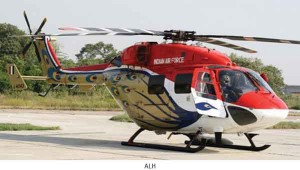 From operating the Auster/ Krishak two-seater, fixed-wing aircraft as part of the erstwhile Air Observation Post (AOP) units to the induction of light observation helicopters (Chetak/Cheetah) in the early 1970s, the birth of the Corps in 1986, and the induction of the Hindustan Aeronautical Ltd. (HAL) manufactured twin-engine Advanced Light Helicopter (ALH) and its armed version, the ‘Rudra’ in 2002 and 2013 respectively, has been a challenging journey. However, its growth has been nowhere near what was envisioned in 1963 by the then Chief of the Army Staff General JN Chaudhary and as per its successive perspective plans. Today, the AAC lacks the requisite firepower, manoeuver and assault capability in terms of attack and lift helicopters to be called ‘The Arm of The Future’.
From operating the Auster/ Krishak two-seater, fixed-wing aircraft as part of the erstwhile Air Observation Post (AOP) units to the induction of light observation helicopters (Chetak/Cheetah) in the early 1970s, the birth of the Corps in 1986, and the induction of the Hindustan Aeronautical Ltd. (HAL) manufactured twin-engine Advanced Light Helicopter (ALH) and its armed version, the ‘Rudra’ in 2002 and 2013 respectively, has been a challenging journey. However, its growth has been nowhere near what was envisioned in 1963 by the then Chief of the Army Staff General JN Chaudhary and as per its successive perspective plans. Today, the AAC lacks the requisite firepower, manoeuver and assault capability in terms of attack and lift helicopters to be called ‘The Arm of The Future’.
Today, the AAC lacks the requisite firepower, manoeuver and assault capability in terms of attack and lift helicopters to be called ‘The Arm of The Future’.
Modernisation and Transformation Status
The Cheetah /Chetak replacement programme continues to flounder despite the Government-to-Government agreement between India and Russia for the supply of 200 Ka-226T light helicopters under the ‘Make in India’ scheme. Presently, there is no clarity on how this project will move forward and both sides seem to be struggling to meet the challenging ‘Make in India’ requirement of building 50 per cent of the helicopters in India.
While HAL has been designated as the nodal agency for this critical programme along with Russian Helicopters, there are a number of complex issues involved which need to be addressed in order to move ahead.
The recent statement by Russian Helicopters that they are working with HAL to iron out the various contentious issues and that the signing of the contract is likely by the year end is welcome. However, its likely translation into reality seems a distant dream in the current situation. Given the track record of other such crucial Government-to-Government deals such as the Army’s M777 Howitzer that is still nowhere near closure despite a period of three to four years having elapsed, the prospect of concluding a contract for the Ka-226T project by end of the year does not inspire much confidence.
In the meantime, there seems to be no clarity on the fate of the latest Request For Information (RFI) which was issued for the never ending Reconnaissance and Surveillance Helicopters (RSH) programme on October 31, 2014, in a ‘Buy-and-Make-India’ arrangement with a certain number of helicopters to be supplied by the selected Original Equipment Manufacturer (OEM) in fly-away condition and the remaining to be built in India by an Indian partner through licensed Transfer of Technology. The response date was extended twice from the original December 17, 2014, with the final date being pegged at April 20, 2015. This generated much interest, and was the key topic of speculation during Aero India 2015. But the Ka-226T agreement has left the fate of the 197 RSH project hanging in balance with no clarity from the Government so far. While the RSH project has not been cancelled, total confusion reigns in the industry and the armed forces regarding its future.
With the current dismal state of the Chetak and Cheetah fleets as also serious maintenance and safety concerns, the writing is clear on the wall. The maintenance of this fleet has now become a nightmare, a fact accepted by both the HAL and the three services. There is understandable disquiet on this matter within India’s military aviation fraternity which needs to be taken serious note of, as this gravely impinges on operational preparedness. The Cheetal helicopter (Cheetah fitted with a more powerful engine) fielded by HAL of which the Indian Army is planning to acquire 20, is only a stop-gap measure to meet the current criticalities for high altitude operations and needs to be treated as such. The Ka-226T is a good platform and has already been through trials in India along with the AS 550 C3 Fennec from Airbus. The Government must work with the Russian Government in a time-bound manner in resolving all issues, howsoever complex and sign the contract by the end of this year or else it will be another critical defence deal gone awry leaving the army struggling with the vintage Cheetah/Chetak helicopters seriously affecting its operational capability.
The Government policy on ownership of Attack Helicopters continues to be confused and muddled.
The Government policy on ownership of Attack Helicopters continues to be confused and muddled. It was on October 12, 2012, that the Ministry of Defence (MoD) after vacillating for decades, took the call on the crucial issue of the ownership and operations of Attack Helicopters. The letter issued by the MoD thereafter clearly stipulated that the entire AH fleet will be owned, operated and maintained by the Indian Army. This decision was very crucial for the Indian Army as the ownership of these critical assets was expected to have a major impact on war-fighting in the Tactical Battle Area (TBA). As a consequence of this decision, it was assumed that the 22 Apache AH-64E (Guardian) Longbow AH being procured from the US by the Indian Air Force (IAF), were to form part of army aviation. This assumption was based on the basic premise that the two units of MI-25/MI-35 AH presently held with the IAF, are Army assets and are also operationally controlled by the Indian Army – in fact a few pilots of the AAC are also posted to these units. It, therefore, came as a complete surprise when the previous Government stated the 22 Apaches being acquired will remain with the IAF. This decision defies logic and seems based purely on considerations other than military.
However, to placate the Indian Army, the Government gave an in-principle approval for the Army’s requirement of 33 Apaches for its three Strike Corps. However, in the current emphasis on ‘Make in India’ and the costs involved, it is doubtful whether this proposal will ever see the light of day, leaving the Army Aviation bereft of a state-of-the-art weapons system which has the capability to play a crucial role in any future conflict in the plains. This lethal weapons system as part of the Indian Army’s inventory would greatly enhance its capability, making it a battle-winning factor in any future conflict.
Similarly, the Indian Army’s plans to acquire a suitable helicopter in the 10-12 tonne class, the TBSH, with stealth features for its Special Operations Units as well as enhancing its overall tactical lift capability, have met with no success due to various factors, main being the turf battles between the Indian Army and the IAF over the ownership of different categories of helicopter assets. HAL has been looking at the feasibility of a Joint Venture with a foreign vendor for a 10-12 tonne class multi-role helicopter for almost a decade, whose variants would also be available to the Navy and the IAF. However, so far very little progress has been made on this project. As a result, the Indian Army has been forced to equip its Special Operations helicopter units under raising, with the ALH – a far cry from the specialised helicopters ideally required for such units.
In the medium and heavy-lift category, the story remains somewhat the same. In the medium-lift category, the 171 x Mi-17V5s acquired by the IAF include a large percentage of the Indian Army’s requirements for strategic lift capability. Similarly, the genesis of the 15 CH 47F Chinook helicopters being acquired in the heavy-lift category is based on the Indian Army’s requirement for lifting heavy weapons and stores, especially the Ultra Light Howitzer’s (M777) being acquired for our Eastern and Northern borders, where the communication infrastructure is inadequate and the terrain challenging. These are legitimate assets of the Indian Army which should be held with the AAC for their optimal utilisation, but unfortunately continue to be held and operated by the IAF.
There is an imperative need for integration of all elements of army aviation (combat and combat support) into a cohesive combat organisation…
Some Positive Developments
The HAL has undertaken the development and manufacture of a three-tonne class Light Utility Helicopter (LUH). This is to cater to the light reconnaissance and observation class of helicopters for the Indian Army and the IAF, and is over and above the RSH and the Ka-226T helicopters programmes. The LUH has already demonstrated its first flight recently and as per HAL sources, is well on its way to be fielded by the end of 2017. The plans are to manufacture 184 LUH in the new helicopter complex being built in Tumakuru located North of Bengaluru in Karnataka. The foundation stone for the new facility was laid by Prime Minister Narendra Modi in January this year. Overall, there is a requirement of around 500 helicopters of the light observation class, with the Indian Army’s requirement amounting to approximately 300, including the replacement of Chetak/Cheetah.
In a related development, the armed version of the ALH called ‘Rudra’ developed by the HAL has already commenced its induction into the Indian Army with a unit currently under raising. Though not a typical attack helicopter, it has an array of comparable weapon systems to include gun, rockets, air-to-air, and Air-To-Ground Missiles (ATGM). However, the present fleet of Rudras being inducted is without an integrated ATGM. This is a major drawback, rendering the Rudra in its present form, to be only a gunship and not an armed/attack helicopter as was envisaged earlier. ‘HELINA’, the air version of the ‘Nag’ ATGM being developed indigenously, is nowhere on the scene. It is required to arm both the Rudra and the Light Combat Helicopter (LCH), which is under development. It is important to note that this project has been going on for more than a decade and has not fructified to date. The Rudra units are to form part of the Holding/Pivot Corps providing a formidable offensive punch to the field force commander. Seven to eight units of Rudra are planned for induction into the Indian Army in the coming years as per the perspective plan.
In this context, the development of the LCH by HAL is expected to be a milestone achievement. The LCH, as per HAL claims, aims to gate-crash the exclusive club of the state-of-the-art light attack helicopters, which includes Eurocopter’s Tiger, Bell’s AH 1Z Super Cobra and China’s ultra secret Zhisheng 10 (Z-10). The LCH is a derivative of the ALH and the Rudra, and is being designed to fit into an anti-infantry and anti-armour role with the capability to operate at high altitudes (16,000 feet), a distinct advantage over other attack helicopters. Unlike the Rudra, the LCH will have tandem seating cockpit and stealth features, but will carry the same weapons package as on the Rudra. The helicopter is expected to enter service by 2017, but without the ATGM, will remain a lame duck compared to the above listed attack helicopters. The Indian Army has plans to induct 114 such machines into its inventory and it is hoped that a suitable ATGM will be available before its commencement of induction by end of 2017 – though this seems unlikely under the present circumstances.
Keeping in mind the vast expansion plans of the Army’s air wing in the coming years and induction of sophisticated state-of-the-art equipment, simulators will be the way forward for future training methods…
Organisation and Infrastructure
While steps have been taken both by the Indian Army and the AAC to address various important and complex organisational issues related to operational and administrative functioning, a lot still needs to be done. The establishment of a Flying Training School, the direct entry of officers into AAC from Indian Military Academy and Officers Training Academy, approval of permanent cadre for other ranks and establishment of an AAC Training Centre, the upgrade of the post of Director General Army Aviation to a three-star post and the operationalisation of the concept of Corps Aviation Brigades are significant developments. However, there are a number of crucial issues which still need to be addressed. Foremost among these is the designation of the arm as a combat arm if it really is to be ‘The Arm of The Future’ – it certainly cannot be grouped with the Minor Corps.
Another important issue is the requirement to amalgamate the technical manpower of EME into permanent cadre of the AAC. This manpower is the largest strength of AAC, but its parent Directorate remains the EME, which is responsible for the overall training and administration. It is a complex issue but needs to be addressed in the larger interest for greater cohesion and operational functionality. A major area of concern is regarding fewer volunteers opting for the AAC, the supposedly elite arm of the Indian Army unlike the yesteryears. The Indian Army needs to introspect on the basic reasons for the same and take suitable remedial measures to reverse this trend, even though some attribute it to overall shortage of officers, limited career prospects and unsafe flying machines such as the Cheetah/Chetak.
There is also an urgent requirement to build suitable infrastructure and have it in place to absorb the new equipment and organisations. Support services such as airfields, air traffic control, met equipment and maintenance equipment, would also need upgrading and refurbishing. Lastly, the most important facet, the facilities for the training of aircrew and ground crew need modernisation. The importance of simulators for this purpose cannot be over emphasized. Currently, the HAL in a joint venture with a Canadian firm (CAE) has come up with a full motion simulator for training of ALH pilots (civil/military) at their ‘HATSOFF’ Complex in Bengaluru. Keeping in mind the vast expansion plans of the Army’s air wing in the coming years and induction of sophisticated state-of-the-art equipment, simulators will be the way forward for future training methods as they are cost and time saving.
Despite the above developments, it would be pertinent to mention that the Aviation Arm of the Indian Army today is nowhere near the one envisaged in 1963 or as has been projected in the Army’s perspective plans over the years and lacks some vital elements in its inventory, related to firepower, lift and logistics capability. It is indeed a far cry from the Aviation Corps of the other professional armies in the world like those of the USA and the UK and our neighbours China and Pakistan who operate and own all types of helicopters as well a certain number of fixed-wing aircraft. More importantly, the ownership issue has not been addressed in its entirety, with critical assets such as the medium and heavy lift helicopters still remaining with the IAF, thereby denying the Indian Army its legitimate tactical and logistical lift capability requirements.
Experience of other nations clearly illustrates that each service needs a viable integral aviation component for it to retain the capacity to include air encounters as part of its personal armory.
In order to dominate the tactical battle space of the 21st century, the roles that army aviation needs to perform in support of land battle require equipment, personnel, aircrew and organisations that enhance the overall goal and capability of the land forces commander. The present structure is inadequate for the short, swift and limited wars envisaged in the future. While the transformation process has been set into motion, a lot still needs to be done as brought out earlier.
Experience of other nations clearly illustrates that each service needs a viable integral aviation component for it to retain the capacity to include air encounters as part of its personal armory.
There is an imperative need for integration of all elements of army aviation (combat and combat support) into a cohesive combat organisation – for only then can the Army Aviation Corps be anointed as ‘The Arm of The Future’. The Indian Army itself will have to play a major role in nurturing and building the AAC to achieve this vision in the future.




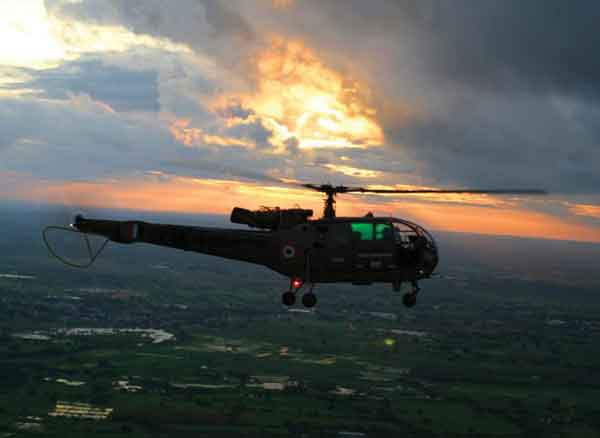
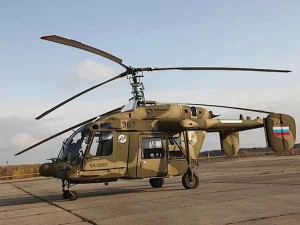
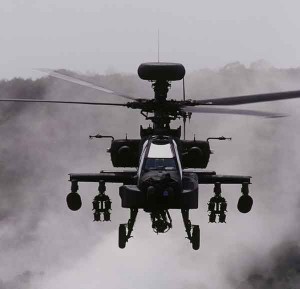
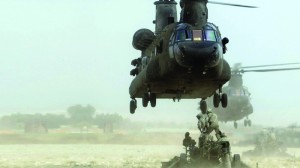

Nobody can understand why these apache and the chinook heavy lift helicopters have been given to the Indian air force the Air force wants everything that flies to be in their inventory while the above two helicopters are for use by the army and if they want these helicopter for army operations they have to get permission from the air force , The air force should take care of their fighter jets and surveillance planes and leave the attack and heavy lift helicopters to the army and this turf war with the army is not good.
I think you are not keeping up to date information. Indian Army to receive M777 Howitzer by June 2017. A few years back I read an article “Attack Helicopter: “Should India have them?” By Capt, AG Bewoor.Please open the link given below to read the article.
https://www.indiandefencereview.com/news/attack-helicopters-should-india-have-them/
What he has written is a fact and it is dangerous to use helicopters on the battlefield. Can you suggest any solution? Defense people give importance to the vehicle carrying the weapon and not to the weapon.